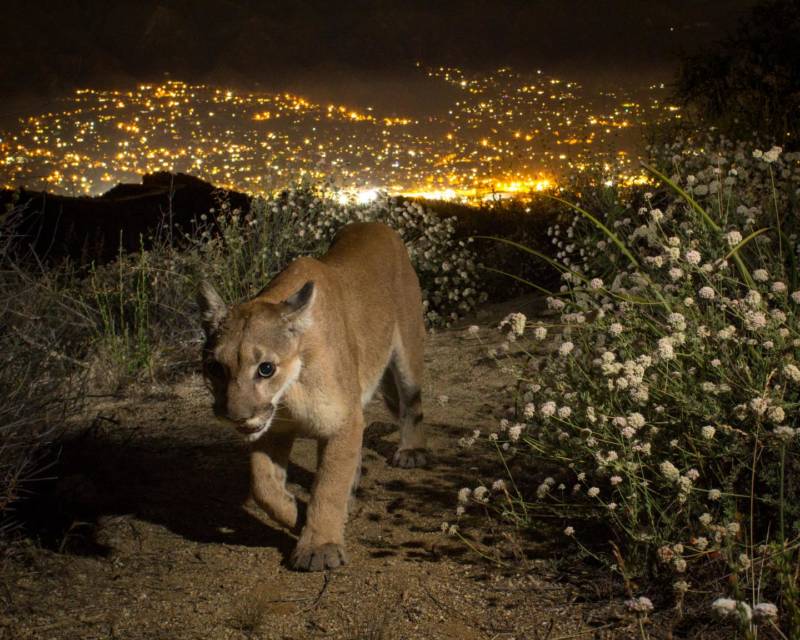Lions once prevalent over two Southern California mountain ranges could disappear entirely within 50 years, risking local extinction because of conditions both environmental and genetic.
That’s the conclusion of a new study published in the journal Ecological Applications that uses 15 years of observational data, modeling and DNA analysis to analyze how cougar populations are changing in the Santa Monica and Santa Ana mountains.
The coastal Santa Monica range is home to about 15 mountain lions; 30 more survive in the Santa Anas, straddling Orange and Riverside counties. They’re penned in by a century of development, ranch and agricultural land, and freeways – U.S. 101 in the Santa Monicas, Interstate 15 in the Santa Anas – that are two of the busiest in the world.
Humans are often to blame for mountain lion deaths: cars and rat poison are two common killers.
“Our research has shown that the mountain lions in the coastal Santa Ana Mountain Range are primarily put at risk by restriction of their movement across I-15,” says T. Winston Vickers, an associate veterinarian at UC Davis who co-authored the report, “and their high mortality rates from vehicle collisions and being killed after they have killed unprotected pets or livestock.”
